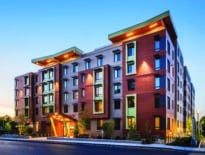With mortgage interest rates and home prices likely to increase this year, prospective homebuyers are turning more pessimistic than ever: a record low 25 percent of respondents in Fannie Mae’s latest monthly Home Purchase Sentiment Index survey said it was a good time to buy a home.
While Fannie Mae’s survey shows overall homebuyer sentiment hasn’t reached Great Recession levels, it was roughly as low in January as it was in the fall of 2012 and 2013, and the lowest homebuyer confidence has been since it briefly cratered in the early days of the COVID-19 pandemic.
“Consumer sentiment toward housing softened further in January – the HPSI fell 2.4 points to 71.8 – as affordability and supply constraints continue to limit home purchase opportunities, particularly among younger households,” Fannie Mae chief economist Doug Duncan said in a statement. “Younger consumers – more so than other groups – expect home prices to rise even further, and they also reported a greater sense of macroeconomic pessimism. Additionally, while the younger respondents are typically the most optimistic about their future finances, this month their sense of optimism around their personal financial situation declined. All of this points back to the current lack of affordable housing stock, as younger generations appear to be feeling it particularly acutely and, absent an uptick in supply, may have their homeownership aspirations delayed. On the whole, the latest HPSI results are consistent with our forecast of slowing housing activity in the coming year.”
Among survey respondents aged 18-34 – prime first-time homebuying years – 83 percent thought it is a bad time to buy a home, with buyers aged 35-44 following close behind.
A new joint research report by the National Association of Realtors and Realtor.com suggests these younger buyers aren’t imagining things.
Across the country, buyers typically thought of as comfortably middle-class have seen listings evaporate. There were 400,000 fewer listings affordable to households earning between $75,000 and $99,999 in December than there were that month in 2019, before the pandemic. In the Boston metro area, that figure was 516, down from an even 1,500 pre-pandemic. For Boston-area households earning between $125,000 and $149,999, the number of listings they could afford dropped from 4,739 to 2,056 over that same time period.
And for local households making between $50,000 and $74,999, there was one listing they could afford for every 1,206 households in their income bracket in December, compared to one affordable listing for every 14 households earning $500,000 or more.
“[T]he homeownership rate has been around 50 percent for all households in the expensive metro markets, such as Los Angeles and San Francisco, and therefore it’s becoming nearly impossible to afford a home, especially for Black households,” NAR chief economist Lawrence Yun said in a statement. “At the same time, there are affordable markets that still provide opportunities to achieve homeownership as inventory at affordable price points is reasonably available.”




 |
| 


